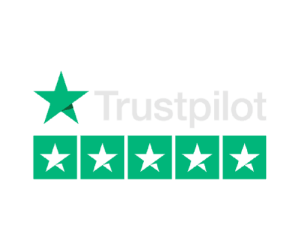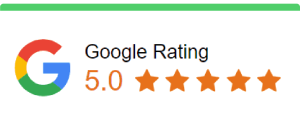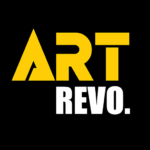In today’s digital-first art world, creating beautiful work isn’t enough — you need to ensure your audience can actually find it. That’s where SEO (search engine optimization) becomes essential. Whether you’re a gallery owner seeking to reach curators and collectors, or an independent artist hoping to sell art online, strong website SEO in 2025 is non-negotiable.
This guide for artists and galleries explores how to optimize your website, content, and digital presence to appear in search engine results, connect with art buyers, and build a lasting online presence. With the right SEO strategies, your work can reach a global audience, drive more traffic, and convert visits into meaningful engagement and sales.
Why SEO Matters for Artists and Galleries in 2025
As more collectors, curators, and art lovers turn to search engines to discover new artists and buy art, the competition for visibility intensifies. Search phrases like “original art online,” “buy abstract painting,” or “fine art gallery near me” have become crucial search trends that reflect buyer intent.
In 2025, many galleries struggle with outdated digital strategies, while others thrive by implementing effective SEO practices. Understanding how search engines rank content and how SEO helps your work be found is critical for anyone in the art market today.
SEO is crucial because:
-
It builds long-term visibility for your artist website or gallery
-
It helps search engines understand your artwork, style, and relevance
-
It attracts collectors actively searching for art online
-
It creates digital pathways for press, opportunities, and collaborations
Platforms like ArtRevo.net are dedicated to empowering creatives with digital marketing strategies and tools to grow their reach in the evolving art ecosystem.
Understanding Search Engine Optimization in the Art World
Search engine optimization (SEO) refers to a set of techniques that improve your site’s ability to appear in organic (non-paid) search engine results. For artists and galleries, SEO bridges the gap between your work and the people looking for it.
SEO for creatives involves:
-
Understanding how Google and other engines index and rank content
-
Aligning with search intent such as “original oil painting for sale” or “best galleries in Paris”
-
Structuring your website SEO to highlight your niche, medium, and value
For example, a gallery specializing in modern sculpture can target phrases like “buy modern sculpture art” or “sculpture gallery in New York,” helping them appear in searches relevant to their audience.
SEO Strategies for Art Galleries: Attracting Collectors and Curators
Art galleries face unique SEO challenges — managing multiple artist pages, event listings, press features, and online catalogs. Here’s how to structure your gallery’s site for maximum impact:
1. Build Out Artist Pages
-
Use full names in titles (e.g., “Artist: Maria Estevez | Abstract Works”)
-
Include an optimized artist statement, bio, and portfolio
-
Use descriptive alt text for images
2. Optimize Exhibition Listings
-
Include show dates, artist names, and relevant themes
-
Use schema markup for events to enhance visibility in search results
3. Target Location Keywords
-
Add phrases like “Contemporary art gallery in Chicago”
-
Build local SEO with a Google Business Profile and localized content
4. Use Structured URLs
-
Example:
www.yourgallery.com/exhibitions/spring2025vs.www.yourgallery.com/page2
When done well, these strategies allow art gallery websites to capture traffic from collectors, tourists, and curators searching for art in their area or niche.
Artist SEO: Building Your Personal Art Brand Online
For independent artists, your website acts as your portfolio, studio, and storefront. SEO for artists ensures your work doesn’t get lost in the crowd.
Key SEO Tips for Artists in 2025:
-
Choose a descriptive domain name if possible (e.g., www.katieriveraart.com)
-
Write a keyword-rich artist statement and bio that includes your medium, location, and style
-
Blog about your process, studio life, and inspiration using relevant keywords (e.g., “how to paint with oils,” “watercolor landscapes”)
-
Optimize image files: use filenames like
blue-sea-oil-painting.jpgand add alt text describing the piece
These practices not only help search engines understand your work but also create content pathways that drive organic traffic from collectors and art lovers.
Technical and On-Page SEO for Artist Websites
Beyond content, technical SEO ensures your site is fast, secure, and easy for search engines to crawl. This is often where many galleries struggle, but mastering it can significantly boost visibility.
Technical SEO Checklist:
-
Ensure mobile responsiveness across all pages
-
Improve page speed (use tools like Google PageSpeed Insights)
-
Secure your site with HTTPS
-
Submit your site to Google Search Console
-
Use an SEO plugin like RankMath or Yoast for on-page guidance
On-Page SEO Best Practices:
-
Use H1 and H2 headers to organize content
-
Include internal links between pages (e.g., from “Available Works” to “About the Artist”)
-
Write meta descriptions (150–160 characters) for every page
-
Structure content using best practices like bullet points, short paragraphs, and keyword use
Local SEO for Brick-and-Mortar Galleries
If you run a physical gallery space, local SEO is essential to capture searchers in your geographic area.
Local SEO Essentials:
-
Create and verify your Google Business Profile
-
Include full address and phone number in your website footer
-
Use phrases like “fine art gallery in [City]” in your page titles
-
Gather reviews from collectors and visitors on Google and Yelp
-
Publish local-focused blog content (e.g., “Best Art Exhibits in San Diego This Fall”)
When done consistently, these efforts help drive traffic from tourists, curators, and residents looking to explore art galleries near them.
Off-Page SEO: Art Blogs, Social Proof, and Backlinks
Off-page SEO builds authority and trust with search engines through links and mentions across the web. In the art world, this often happens organically through coverage in art blogs, press features, and social media.
Off-Page SEO Techniques:
-
Get featured on reputable art blogs and online magazines
-
Write guest posts or share your insights on other art websites
-
Collaborate with influencers or other artists and link to each other’s pages
-
Get listed in artist directories or art fair websites
-
Build quality backlinks from educational institutions or museums when possible
Each link back to your website signals relevance and authority to search engines, improving your rankings in search engine results.
Using SEO Tools to Monitor and Improve Performance
Monitoring your SEO performance is just as important as implementing strategies. These tools like Google Analytics and Search Console help you refine your approach over time.
Recommended SEO Tools for Artists and Galleries:
-
Google Analytics: Track how users interact with your site
-
Google Search Console: See which keywords drive traffic and how pages rank
-
RankMath or Yoast SEO: On-page optimization and readability guidance
-
Ubersuggest: Keyword research and competitor analysis
-
SEMRush or Ahrefs: More advanced SEO tracking for growing galleries
These platforms help identify opportunities, track progress, and make data-informed SEO improvements over time.
Common SEO Mistakes Galleries Make
Even the best intentions can go awry. Here are frequent SEO mistakes to avoid:
-
Uploading artwork with large image files and no alt text
-
Using vague or generic page titles like “Home” or “New Page”
-
Not targeting location-based keywords for gallery spaces
-
Forgetting to update metadata for exhibitions or artists
-
Overloading pages with dense text and no search intent alignment
-
Ignoring internal linking between relevant content
Avoiding these pitfalls can make the difference between being buried on page five or featured on page one of search results.
Tips for Emerging Artists to Improve Online Visibility
If you’re new to the art scene or just launching your website, don’t worry. Here are accessible SEO tips for emerging artists:
-
Use a clean, minimalist website theme with fast loading speeds
-
Optimize each artwork page with titles like “Acrylic Portrait – 2025”
-
Add an artist blog with behind-the-scenes content
-
Include contact info and links to social media
-
Share your website across platforms to build backlinks
Most importantly, remember that SEO is an ongoing process. It takes time, content, and consistency — but the rewards for your art brand are worth it.
Conclusion: The Ongoing Practice of SEO in the Art World
Just as art evolves, so does the way we present and promote it. In 2025, mastering SEO for artists and galleries is one of the most effective ways to grow your audience, sell art, and stand out in a crowded marketplace.
Whether you’re managing a renowned gallery or building your presence as an emerging artist, investing in smart SEO strategies ensures your work connects with the right viewers, buyers, and curators — at the right time.
At ArtRevo.net, we help creative professionals implement website SEO, content strategies, and technical improvements to ensure their art doesn’t just exist — it’s seen.
FAQs About SEO for Artists and Galleries
What is SEO and why does it matter for artists?
SEO (Search Engine Optimization) helps your website appear in relevant search results. For artists, it means more visibility, more visitors, and ultimately, more art sales.
How do I improve the visibility of my artist website?
Use keywords, optimize image alt text, create content around your medium or niche, and improve site speed. Regular blogging and internal linking also help.
Should art galleries invest in local SEO?
Yes. Local SEO helps brick-and-mortar galleries appear in searches like “art galleries near me” and connect with collectors in their region.
What are the best SEO tools for artists?
Start with Google Search Console, Google Analytics, and RankMath or Yoast SEO. For keyword research and performance tracking, consider Ubersuggest or Ahrefs.
How can I optimize images of my artwork for search engines?
Rename image files (e.g., abstract-painting-acrylic.jpg), add descriptive alt text, compress images for speed, and use relevant captions.
What is the difference between on-page and off-page SEO?
On-page SEO involves elements on your site (keywords, content, headers). Off-page SEO includes backlinks, media coverage, and social proof that improve your site’s authority.
How long does it take to see results from SEO in the art world?
Most see noticeable changes within 3–6 months, but SEO requires ongoing effort. It’s a long-term investment in visibility and growth.



